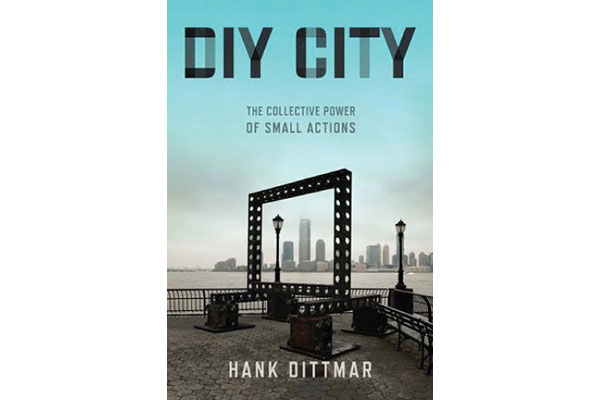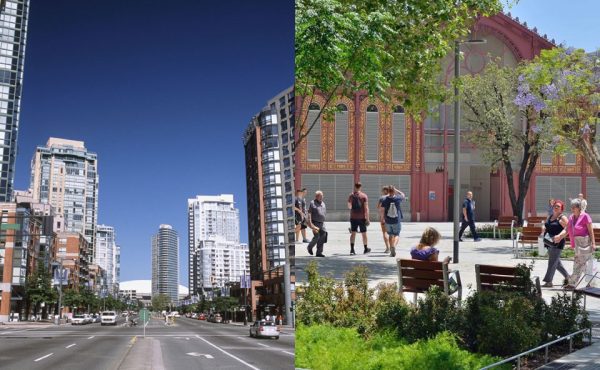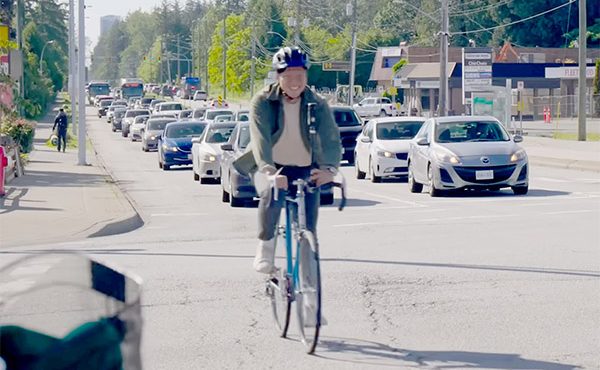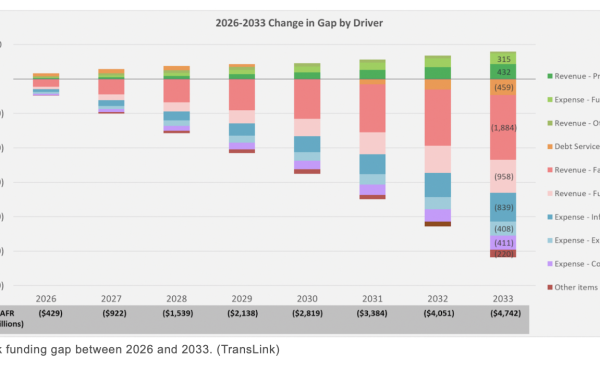
Author: Hank Dittmar (Island Press, 2020)
DIY, or “do-it-yourself,” as it relates to urban planning, most easily evokes images of colourful tactical urbanism projects. Tactical urbanism is directly accessible to almost anyone with a can of spray paint, and it’s truly something you can “do yourself.” Hank Dittmar’s book DIY City goes beyond this grassroots definition and is aimed more at politicians, planners, and community organizers.
Sprinkled with pop culture references that tie projects and movements to cultural moments, DIY City is about how small changes can lead to significant impacts, but it is not prescriptive. Instead, it argues that city planners and other community leaders need to make intentional room for these small changes to occur naturally through careful policy and strategic relaxation of regulations to create “slack” in the system.
Many examples are drawn from international case studies and specifically from Dittmar’s work with the Prince’s Foundation—an organization headed by King Charles (formerly Prince Charles) which focuses on sustainable community development. Because of this, the title “DIY City” – specifically the DIY part, must be taken with a grain of salt. Many of the case studies in the book were motivated either through significant world events (i.e. zoning changes aimed at increasing housing density in Washington DC in WW2) or the backing of international aid organizations (Princes Foundation). But that is not to say they are not helpful; the message is that small interventions are critically important to enable and foster community health and are essential in promoting creativity and equity in cities.
Three critical examples from DIY City of the kinds of policy changes available to politicians, community organizers and planners in fostering small incremental change include:
Allowing Small Scale Development
In most municipalities, new development is regulated through a constellation of bylaws, whose primary purpose is to ensure new projects proceed in a way that reflects community values. However, when applied to smaller projects, these bylaws can play against a community’s goals for things like housing. For example, Dittmar cites examples in certain places where getting permits for new buildings is easier than retrofits to existing ones. By creating barriers for small projects, poorly designed regulations stymie small-scale builders who, in aggregate, have a sizeable collective power to make progress in adding new housing supply.
Encouraging Meanwhile-Uses
“Meanwhile-uses” are temporary activities that can take place in a space while financing and approvals are being arranged for more complex developments. This can take years for big projects, and unless there are clear incentives or requirements to maintain some level of activity, sites can sit empty the whole time. Meanwhile-uses can include those on bare ground or in existing buildings. Examples from Dittmar’s book include a variety of artisan and market spaces which can actually draw more interest to a site and create added value and a sense of place. If done well, meanwhile-uses can be incorporated into what comes next and continue the story. However, if meanwhile-uses are desired, they must be permitted, encouraged, or mandated.
Formalizing Informal Arts Spaces
Reducing barriers and regulations is a common theme throughout DIY City, but it is not to say that Dittmar wants to do away with them altogether. In most cases, building codes and bylaws were created to protect people from fire, earthquakes, electrical, or other potential hazards. However, a city’s most culturally productive sites can find and grow in some of its oldest and most at-risk buildings. Instead of condemning these spaces and removing them in the name of public safety, Dittmar argues that cities should recognize the value of these spaces and work with tenants to ensure they are safe. One grassroots tool is the D.I.Y. Harm Reduction Manual, a crowd-sourced manual full of recommendations designed to help organizers make their venues safer.
DIY City is a call for community planners, organizers, and politicians to loosen up a bit. Leaving some slack in the system can make it possible for people to make small interventions, start and grow local businesses, make changes to their environment, and try something new. By locking the city down with too many regulations, you lose that innovation, culture, and economic benefit, and it chokes the city’s ability to evolve and grow. It’s important to ensure enough regulation to keep people safe, help the community achieve its goals, and allow for some spontaneous creativity. By allowing small and leaving some slack in the line, it becomes possible for the city to become something more than just a collection of buildings.
***
You can learn more about DIY City by going to the Island Press website.
**
Andrew Cuthbert is a community planner who works on land use plans, zoning bylaws, and active transportation plans all over British Columbia. He loves helping communities solve problems. When not working, Andrew can most likely be found on his bike taking in the sights and fresh air.




